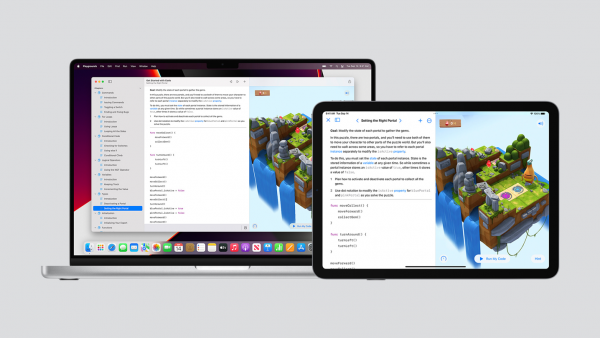源码
实现一个优雅的iOS事件总线
目标
订阅登录事件LoginEvent,当self dealloc时候自动取消订阅
[QTSub(self, LoginEvent) next:^(LoginEvent *event) {
}];
订阅通知NSNotification,当self dealloc的时候自动取消订阅
//订阅通知name
[QTSubNoti(self,"name") next:^(NSNotification *event) {
}];
//订阅App将要关闭
[[self subscribeAppWillTerminate] next:^(NSNotification *event) {
}];
并且XCode可以自动推断类型
好了,开始啰里八嗦讲原理和设计了,做好准备,文章挺长的。不想看我啰嗦,代码在这里。
Notification的痛点
Cocoa Touch提供了一种消息中心机制:NSNotificationCenter,相信iOS开发者都很熟悉了,
addObserver 订阅通知
postNotification 发送通知
removeObserver 取消订阅
当然,还有一个接口是比较容易忽略的,就是利用block注册订阅
NSNotificationCenter * center = [NSNotificationCenter defaultCenter];
id<NSObject> token = [center addObserverForName:@"name"
object:nil
queue:nil
usingBlock:^(NSNotification * _Nonnull note) {
}];
[center removeObserver:token]
实际开发中,Notification又有哪些痛点呢?
Name如何管理?
方式一:hardcode在代码里
[center addObserverForName:@"UserLoginNotification" ...]
优点:无需额外的import,松耦合。
缺点:修改和版本管理麻烦
方式二:在相关模块的源文件里,比如登录成功的通知放在登录模块里。
//.h文件
extern NSString * const UserLoginNotification; //登录成功
//.m文件
NSString * const UserLoginNotification = @"UserLoginNotification";
优点:便于修改和版本管理
缺点:需要import引入对应的模块,导致强耦合模块,但是得到的却是弱类型。
有些同学喜欢把name堆到一个头文件里,这种设计理念是不符合软件设计原则的:“接口隔离原则,不应该强制客户端依赖那些他们不需要的接口”。想想也有道理:我不需要的通知为啥让我引入进来对吧?。
弱类型
常见的用Notification传递消息的方式是UserInfo,然后声明各种key
extern NSString * const kUserId; //用户id
接收者取出信息
NSString * userId = [notification.userInfo objectForKey: kUserId];
缺点:必须看文档或者源代码才知道通知里具体有什么,字典是弱类型的,不易做接口的版本管理。
弱类型还有个明显的劣势就是无法在编译期找到类型不匹配的问题。
优点:只要userInfo是JSON,就是松耦合的。
胶水代码
使用Notificaton不得不写很多胶水代码
取消监听,不然会crash
- (void)dealloc{
[center removeObserver:self];
}
取出通知内容
NSString * userId = [notification.userInfo objectForKey:@"userId"]
小结
总的来说,NotificationCenter的通信方式在完全松耦合的场景下是很适用的:发送者不用关心接收者,发送者和接受者统一按照JSON等协议通信。
而实际开发中,很多时候我们并不需要松耦合的通信。
业务层代码的通信需要松耦合,因为两个业务通常是独立开发迭代,通信按照指定协议即可,不可能开发的时候强制要import另一个业务代码进来。
像登录这种基础服务代码,本质上不属于业务,开发的时候往往需要import对应的framework进来,这时候强类型的通信方式往往更好。
相信我,和基础服务代码通信的频率要远高于业务之间通信,甚至业务之间的通信很多时候也可以沉入到Service层。
总线
总线本质上是”发布-订阅”这种消息范式:订阅者不关心消息由谁发送;接收者也不关系消息由谁接收。
总线是为了解决模块或者类之间消息通信而存在的,如果我们要实现一个总线,我们我们希望它能有哪些特点呢?
接口友好,接口友好,接口友好,重要的事情说三遍
不需要手动取消监听
参数少,方法短,阅读起来一目了然
基于block的回调,降低上下文理解难度
兼容Notification
效率高
支持强类型/弱类型
定义事件
Notification用字符串来唯一事件,用一个类就代表了所有通知。而我们需要同时支持强类型和弱类型事件,怎么办呢?
用类名来区分事件,从而实现强类型:订阅者subscribe类名,发布者dispatch类。
用字符串eventType来对类事件进行二级划分,从而实现弱类型。
协议定义如下
@protocol QTEvent<NSObject>
@optional
- (NSString *)eventType;
@end
这样,我们就可以兼容Notification了
//订阅通知name
[QTSubNoti(self,"name") next:^(NSNotification *event) {
}];
//订阅App将要关闭
[[self subscribeAppWillTerminate] next:^(NSNotification *event) {
}];
0
然后强类型事件client自己定义类,弱类型事件可以采用框架提供的统一类,比如:
//订阅通知name
[QTSubNoti(self,"name") next:^(NSNotification *event) {
}];
//订阅App将要关闭
[[self subscribeAppWillTerminate] next:^(NSNotification *event) {
}];
1
接口
由于我们的事件是用类来定义的,所以接口不难定义:
//订阅通知name
[QTSubNoti(self,"name") next:^(NSNotification *event) {
}];
//订阅App将要关闭
[[self subscribeAppWillTerminate] next:^(NSNotification *event) {
}];
2
取消监听
手动取消
我们需要返回给client一个数据结构来取消监听,我们选择抽象的协议作为返回
//订阅通知name
[QTSubNoti(self,"name") next:^(NSNotification *event) {
}];
//订阅App将要关闭
[[self subscribeAppWillTerminate] next:^(NSNotification *event) {
}];
3
用协议作为返回值的好处是隐藏了内部的实现,这样内部实现就可以独立的变化,而对外透明。
然后内部创建一个具体的类,并且在dispose调用一个传入的block,在传入的block取消订阅
这是函数式的编程思想,把dispose抽象成一个传入的函数。
//订阅通知name
[QTSubNoti(self,"name") next:^(NSNotification *event) {
}];
//订阅App将要关闭
[[self subscribeAppWillTerminate] next:^(NSNotification *event) {
}];
4
自动取消
如何实现自动取消订阅呢?根据二八原则,我们来思考下百分之八十的情况下在什么时候取消监听?
在对象释放的时候。
如果回调方式选择target/action,可以选择支持弱引用的集合(NSMapTable等)。但是我们设计的回调接口是基于block的,总线必须强持有这个block,所以就不能简单的使用这些弱引用集合了。
那么,如何知道一个对象被释放了呢?
关联对象。
由于一个对象可能多次调用,所以我们的关联对象应该支持一次取消多个注册。QTDisposeBag接收多个id
//订阅通知name
[QTSubNoti(self,"name") next:^(NSNotification *event) {
}];
//订阅App将要关闭
[[self subscribeAppWillTerminate] next:^(NSNotification *event) {
}];
5
然后,用关联对象的方式,绑定到指定对象上,这样它的生命周期就和指定对象绑定在一起了
//订阅通知name
[QTSubNoti(self,"name") next:^(NSNotification *event) {
}];
//订阅App将要关闭
[[self subscribeAppWillTerminate] next:^(NSNotification *event) {
}];
6
效率
在分析效率之前,我们下来看看总线的数据模型:
一个ClassName对应着多个监听者: Name -> [subscribers],而总线维护着多个这种映射关系。
最直接想到的数据结构:字典嵌套数组,但是我们都知道数组删除一个元素的时候是需要额外的s时间消耗的,平均O(n)。
为了实现增加和删除效率是O(1),可以选择另外一种数据结构:双线链表。
所以,最后我们的数据结构是:字典 + 双向链表,这样我们在增加和删除元素的时间消耗都是O(1)的。
当然由于总线有可能在多个线程被调用,所以这个数据结构应该是线程安全的。
链式参数
我们来思考下注册Event的时候,有哪些变量:
回调block执行的队列: queue
和哪个对象的生命周期绑定在一起:object
事件的二级划分:eventType
回调的代码块:next
这四个变量除了next是必须的,其他的都是可选的。一种很笨的做法是穷举法:
//订阅通知name
[QTSubNoti(self,"name") next:^(NSNotification *event) {
}];
//订阅App将要关闭
[[self subscribeAppWillTerminate] next:^(NSNotification *event) {
}];
7
这种复杂对象的创建,我们可以用一个工厂来一步步创建:
//订阅通知name
[QTSubNoti(self,"name") next:^(NSNotification *event) {
}];
//订阅App将要关闭
[[self subscribeAppWillTerminate] next:^(NSNotification *event) {
}];
8
EventBus提供一个接口返回QTEventSubscriberMaker对象,让client用组合的方式创建:
//订阅通知name
[QTSubNoti(self,"name") next:^(NSNotification *event) {
}];
//订阅App将要关闭
[[self subscribeAppWillTerminate] next:^(NSNotification *event) {
}];
9
接着就可以用点语法任意组合参数了:
NSNotificationCenter * center = [NSNotificationCenter defaultCenter];
id<NSObject> token = [center addObserverForName:@"name"
object:nil
queue:nil
usingBlock:^(NSNotification * _Nonnull note) {
}];
[center removeObserver:token]
0
简化接口
我们的监听要跟着某一个对象的生命周期走,这时候添加一个NSObject的Category,让self成为一个参数输入能够进一步简化调用流程
NSNotificationCenter * center = [NSNotificationCenter defaultCenter];
id<NSObject> token = [center addObserverForName:@"name"
object:nil
queue:nil
usingBlock:^(NSNotification * _Nonnull note) {
}];
[center removeObserver:token]
1
线程模型
事件的派发可以分为两个步骤:发送者dispatch,接收者回调block
设计回调的时候,有一些问题不得不考虑:那就是整个通信过程是同步还是异步的?都设计成异步的可以吗?
当然不可以都设计成异步的,举个简单的例子:在某些事件的时候,你需要完成某些初始化工作,这些初始化工作未完成的时候,当前线程是不可以走下去的。
所以线程模型默认的设计成了同步,也就是说:发送方dispatch -> eventbus分发 -> 执行回调block这些都是同步的。
通过提供方法,来实现dispatch和回调block的异步
NSNotificationCenter * center = [NSNotificationCenter defaultCenter];
id<NSObject> token = [center addObserverForName:@"name"
object:nil
queue:nil
usingBlock:^(NSNotification * _Nonnull note) {
}];
[center removeObserver:token]
2
神奇的宏定义
为了在编译期支持强类型,所以被QTEventSubscriberMaker定义成了范型类型
NSNotificationCenter * center = [NSNotificationCenter defaultCenter];
id<NSObject> token = [center addObserverForName:@"name"
object:nil
queue:nil
usingBlock:^(NSNotification * _Nonnull note) {
}];
[center removeObserver:token]
3
但是这就有一个问题,我必须这么写,XCode才能自动推断出类型
NSNotificationCenter * center = [NSNotificationCenter defaultCenter];
id<NSObject> token = [center addObserverForName:@"name"
object:nil
queue:nil
usingBlock:^(NSNotification * _Nonnull note) {
}];
[center removeObserver:token]
4
毫无疑问这种接口是及其不友好的,并且这个代码还有个大问题:代码很长。
这时候一个强大工具可以帮助我们来解决这个问题:宏定义。
比如这样的一个宏定义:
NSNotificationCenter * center = [NSNotificationCenter defaultCenter];
id<NSObject> token = [center addObserverForName:@"name"
object:nil
queue:nil
usingBlock:^(NSNotification * _Nonnull note) {
}];
[center removeObserver:token]
5
总结
QTEventBus三部曲:
定义事件
NSNotificationCenter * center = [NSNotificationCenter defaultCenter];
id<NSObject> token = [center addObserverForName:@"name"
object:nil
queue:nil
usingBlock:^(NSNotification * _Nonnull note) {
}];
[center removeObserver:token]
6
订阅事件
NSNotificationCenter * center = [NSNotificationCenter defaultCenter];
id<NSObject> token = [center addObserverForName:@"name"
object:nil
queue:nil
usingBlock:^(NSNotification * _Nonnull note) {
}];
[center removeObserver:token]
7
发布事件
NSNotificationCenter * center = [NSNotificationCenter defaultCenter];
id<NSObject> token = [center addObserverForName:@"name"
object:nil
queue:nil
usingBlock:^(NSNotification * _Nonnull note) {
}];
[center removeObserver:token]
8
---------------------
作者:黄文臣
原文:https://blog.csdn.net/Hello_Hwc/article/details/81023561
本文由 投稿者 创作,文章地址:https://blog.isoyu.com/archives/shixianyigeyouyadeiosshijianzongxian-2.html
采用知识共享署名4.0 国际许可协议进行许可。除注明转载/出处外,均为本站原创或翻译,转载前请务必署名。最后编辑时间为:11 月 21, 2018 at 07:49 下午



